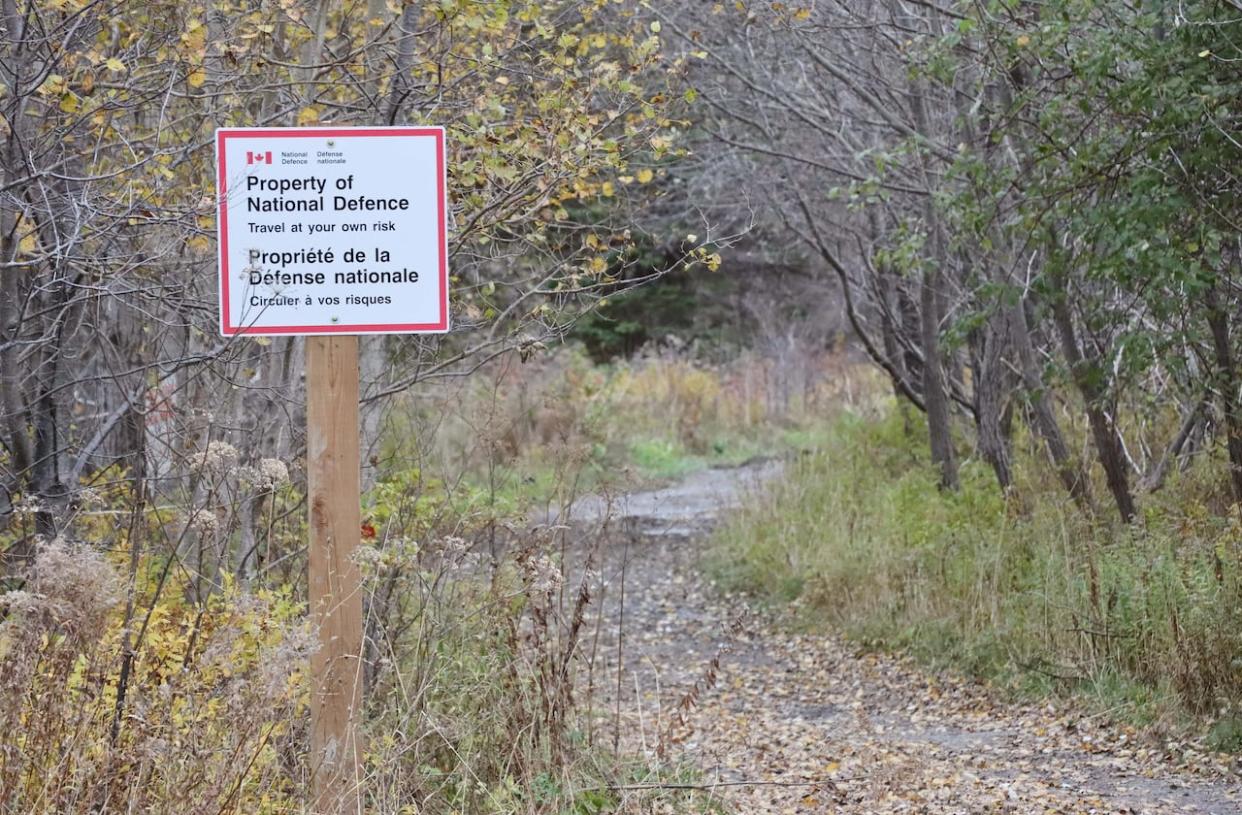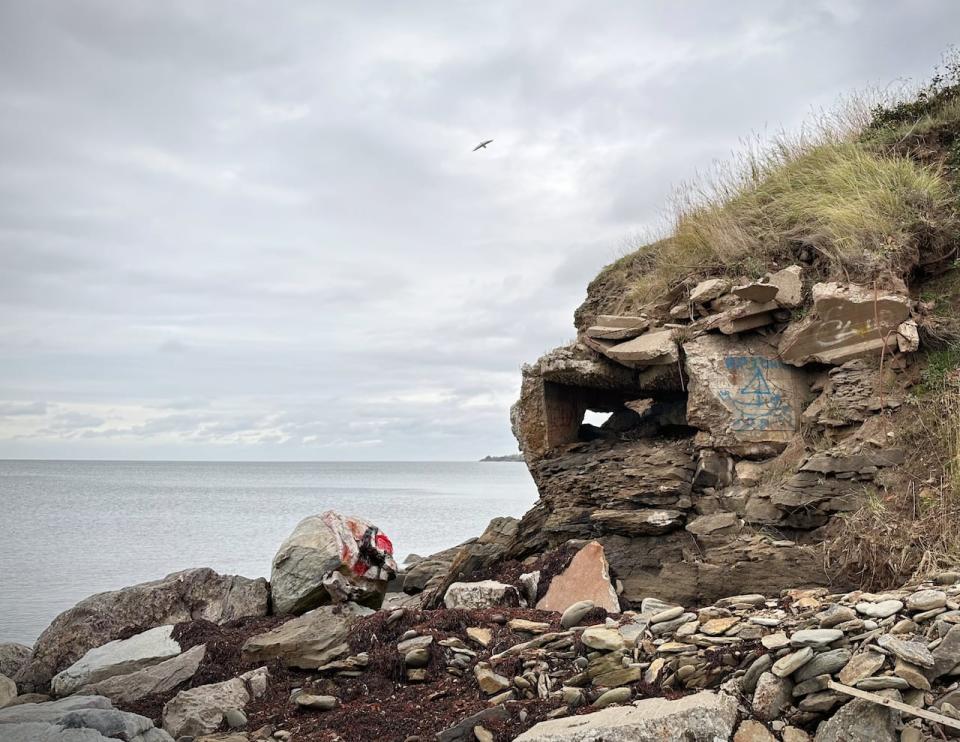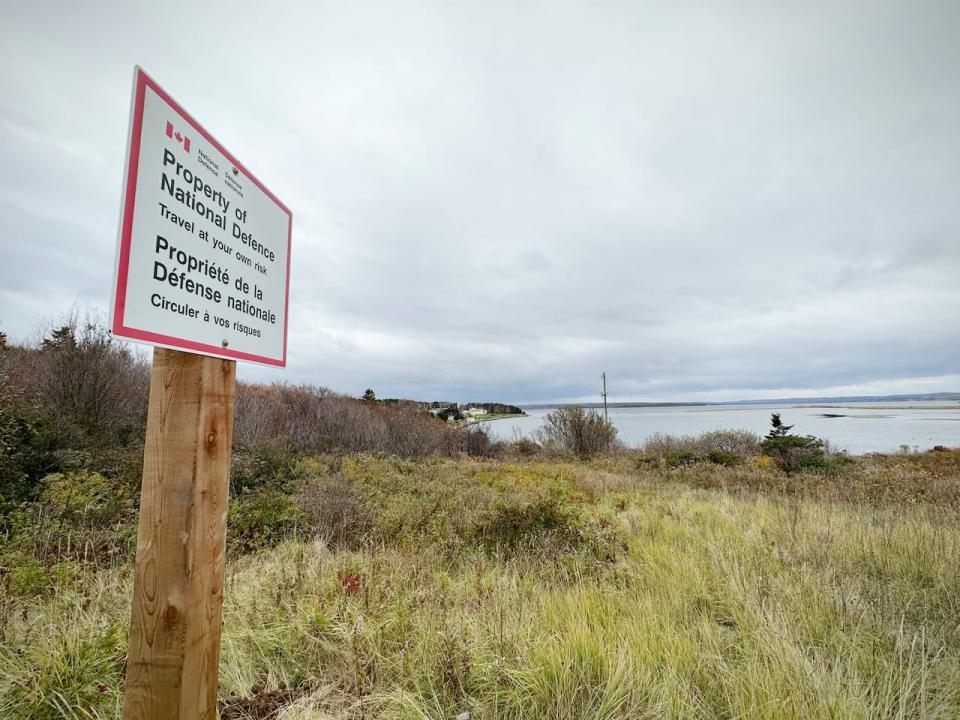Ownership of contentious Cape Breton road solved after 6 weeks, multiple emails

The question of who owns an old dirt road that runs from the highway to the harbour shore north of Sydney, N.S., needed six weeks and emails involving multiple federal departments to solve.
A neighbour thought they owned it, sparking a bitter dispute over public access in the Cape Breton community of South Bar earlier this year. But Nova Scotia property records show it belongs to the Department of National Defence — and now Fisheries and Oceans says it's theirs.
The road meanders through the woods off Highway 28 that runs along the coast between Sydney and New Waterford, leading to a popular sandbar in the harbour.
In April, a neighbouring landowner began blocking the road, claiming it was her property, even using her own vehicle to stop other vehicles from getting out.
After the CBC aired a story on the dispute in May, the neighbour stopped blocking the road. In the fall, signs went up saying the road is DND property.
But DND says it does not own the road. It says it divested itself of the property in 1961.

Online property records say DND owns the road that leads to the shoreline and a crumbling concrete pillbox that was used to protect Sydney harbour during the Second World War. (Tom Ayers/CBC)
Despite that, Nova Scotia's online property records system shows the road is owned by "His Majesty The King In Right of Canada Dept of Natural (sic) Defence."
It used to be a DND road because it leads directly to a crumbling concrete pillbox that was built into the shoreline during the Second World War to protect the harbour, which was often used to assemble convoys before crossing the North Atlantic.
DND referred questions on ownership of the road to the federal department of Public Services and Procurement Canada.
A PSPC spokesperson said more time was needed to delve into deed records going back decades.
A month after contacting that department — and six weeks after the initial request to DND — PSPC said in an email it is "not the custodian of the parcel of land" and referred questions to the Department of Fisheries and Oceans.
A DFO spokesperson eventually sent a short email saying it was federal land owned by Fisheries and Oceans.

DND has been unable to say why they put up signs on the road leading to Sydney harbour when they say they disposed of the property in 1961. (Tom Ayers/CBC)
Meanwhile, DND has not said why it put up signs on the road saying it was their property when, by their own admission, they divested the property more than 60 years ago.
Online property records also show the neighbour's property has been slapped with an active stop order, which a Service Nova Scotia spokesperson says is done to prevent documents from being registered on parcels.
The stop order in this case "was issued as a result of the road being mapped, which split [the parcel with one premises identification number or PID] into separate parcels," Geoff Tobin said in an email.
"New PIDs and parcel descriptions will be required for the separate parcels before any further transactions can take place."
So the road does not belong to the neighbour, who now has to pay for a new land registration process for her parcel, which has become two separate parcels split by a road someone else owns.
MORE TOP STORIES

